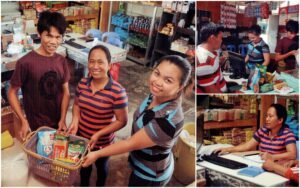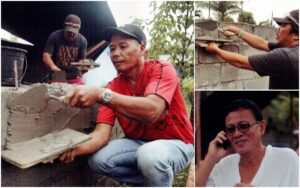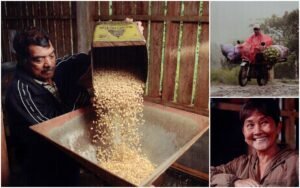
A barangay plants a mini-forest to combat flooding.
Kagawad Minda Salucop has a special bond with the trees that cover the bank of Cogan Creek in Barangay Malagos, Baguio District, Davao City. After all, she has been part of practically every tree-planting activity that has been done here over the past six years. As head of the barangay’s committee on environment, she was instrumental in the rehabilitation of the creek.
She smiles as she surveys the area and remembers what it looked like just a few years before. “There used to be nothing here,” she says, “just a few coconut trees.” When it rained, the creek would swell and rise by as much as five feet. With no trees to hold the water, the resulting flood would continue its rampage until it reached Calinan Proper about five kilometers away.
In 2011, Kasilak, in partnership with Dole Philippines Inc., Stanfilco Division, identified Cogan Creek as a possible area for its Adopt-A-Creek program, a tree-planting endeavor aimed at mitigating the effects of deforestation and climate change. Flowing just a few meters from the Dole Stanfilco plantation and covering around two hectares, the creek was an ideal spot.
The company’s management readily agreed to adopt Cogan Creek and signed a memorandum of agreement with the barangay. “We planted the first 1,500 seedlings on March 10, 2011,” Minda says. Since then, companies, schools, and other groups have been coming regularly to Cogan Creek for their tree-planting activities.
Minda says around 5,000 trees have now been planted in the area. The seedlings are purchased from the nearby nursery run by the Baguio District United Women’s Association (BDUWA), a group also supported by Kasilak. “What used to be empty land is now a mini-forest,” she says, pointing to the narra, mahogany, bamboo, gmelina, and even fruit trees that now abound at the creek’s bank.
To maintain the area, the barangay leads a regular cleanup drive to clear it of garbage. Officials also monitor the mini-forest closely to make sure no one cuts down the trees that have been painstakingly planted.
There is still about a fourth of a hectare to be covered, but Minda is confident that there will be no shortage of groups that will join the cause. The Malagos Elementary School, for instance, has indicated that it will send its fifth and sixth grade students to plant trees. “They like it here because it is very accessible. It’s near the highway so there is no long hike involved,” Minda explains.
When the area is completely covered, the barangay is planning to cross the creek and plant more trees on the opposite bank. Kagawad Albert Alviola, who heads the committee on disaster response, says the barangay wants to cover as much ground as possible. “This is just a small area but it can still contribute to the fight against climate change,” he says.
Ironically, the barangay itself benefits little from the project. “The direct beneficiaries are areas located downstream from us,” Albert says. “The trees absorb water here so it doesn’t flow out there.” Asked why they still embrace the program despite the small returns, he replies: “We’re just doing our part. We all need to help one another.”



